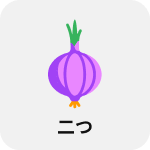Learn Tamil
with Ling
Use our comprehensive lessons, conversation topics, and more to connect with those closest to you
Used by 5M Ling Learners




What makes learning with Ling special
Interactive exercises
Improve your pronunciation by starting a conversation with our app’s interactive chatbot
Engaging activities
Practice your skills with mini-games and track your progress with fun quizzes
Mix of languages
Choose from over 60 languages, both big and small, and listen to audio from native speakers
Proven results
Backed by linguistic research, our learning methods can help you achieve fluency in record time

Master 4 language skills in 10 minutes a day




1-3 minutes to learn new vocabulary
3-5 minutes to review
3-5 minutes to test your listening skills
Done!
Join over 5 million language learners for a 100% guaranteed amazing language experience
Frequently asked questions about learning Tamil
Being fluent in Tamil will broaden your opportunities not just in language learning but for school and work. So, the language is definitely worth learning.
You’re not alone in learning Tamil! Roughly 75-80 million people worldwide speak Tamil as their mother tongue, and Tamil also has native speakers in India, Singapore, Sri Lanka, Mauritius, and Canada.
Here are some reasons why you should learn Tamil:
More insight into Tamil culture
It’s not challenging to learn Tamil when the beauty of its culture, traditions, and people surround you. Even food has a fascinating meaning in Tamil, which makes it even more special to know.
One of the oldest living languages
Scholars have broken up the history of Tamil into three periods: Old Tamil (600 BC-700 AD), Middle Tamil (700-1600), and Modern Tamil (1600-present).
Learning one of the oldest living languages will give you an advantage. Think about how impressed a potential employer will be when they see it on your CV and resume!
Overcome your fear of speaking
Did you know that discovering a new language allows you to practice your communication skills? As many Tamil online lessons have practice speaking tests, you’ll indeed talk your way into fluency.
Are you an English native speaker? If you are learning Tamil through English, you’ll need to allocate at least 1100 hours to reach proficiency in the language.
If you opt to take a Tamil language class, during the first few weeks, you can expect to learn basic greetings and introductions, as well as Tamil grammar lessons and simple vocabulary. It will probably take at least one to two months to finish just this part.
However, if you want to learn quicker, then you can take online Tamil lessons. Language learners say that it only takes eight weeks to complete all the most important Tamil lessons. At this rate, you’ll become fluent in just one year!
But, what if you don’t have the budget for an intensive course or the time to practice speaking or memorizing? The next step is to find an effective language learning app, like Ling! With the Ling app, you can practice the language in more ways than one, such as matching the photos to the vocab word, fixing the jumbled sentences, and more!
Although Hindi is widely spoken throughout India, don’t neglect the beauty of learning Tamil grammar, pronunciation, and alphabet!
But, if you’re trying to decide which language to learn first, then you should start with Hindi. Having beginner to intermediate knowledge of Hindi will make learning Tamil much easier.
Similarities:
- Tamil and Hindi are official languages in India and are second languages in Singapore, Malaysia, Mauritius, and Sri Lanka
- Tamil and Hindi have agglutinative grammar and follow the Abugida alphabet
- You can find many similar words (cognates) in Tamil and Hindi
Differences:
- Tamil has 31 letters, while Hindi has 45
- Tamil has its own script as it is a classical language, whereas Hindi came from the Devanagari Script of the Sanskrit language
- Indian people speak Hindi in northern and central India, while Tamil is the native language of Tamil Nadu people and the Pondicherry district
With every new language comes the hard part: memorizing. But, you don’t have to struggle on your own. There are so many online language learning apps, like Ling, which has comprehensive exercises and a state-of-the-art AI chatbot to practice your conversational skills.
Tamil is one of the most challenging to read and speak, but it is not the most difficult language out there. According to the Foreign Service Institute (FSI), Japanese, Chinese (Cantonese and Mandarin), Korean, and Arabic are the hardest languages.
Ease into Tamil by remembering these facts:
- Grammar: There is a mark for grammatical categories like verb tenses, numbers, or cases. Tamil also follows the subject-object-verb (SOV) word structure. It has two superclasses called the “rational” (uyartiṇai) and the “irrational” (akṟiṇai).
- Vocabulary: Tamil originates from old literature of the Dravidian language. Most words and grammar rules of Tamil come from a book called Tolkāppiyam.
- Speaking/Listening: Two diphthongs emphasize short vowels when speaking Tamil. Consonants are also stressed if they are doubled and have retroflex and rhotic consonants.
- Reading/Writing: Tamil alphabet consists of 18 consonants and 12 vowels with an additional character, āytam. However, you can combine Tamil into compound characters with 247 characters. Reading Tamil is done from left to right with similar lettering from Sanskrit and Garantha script.















































